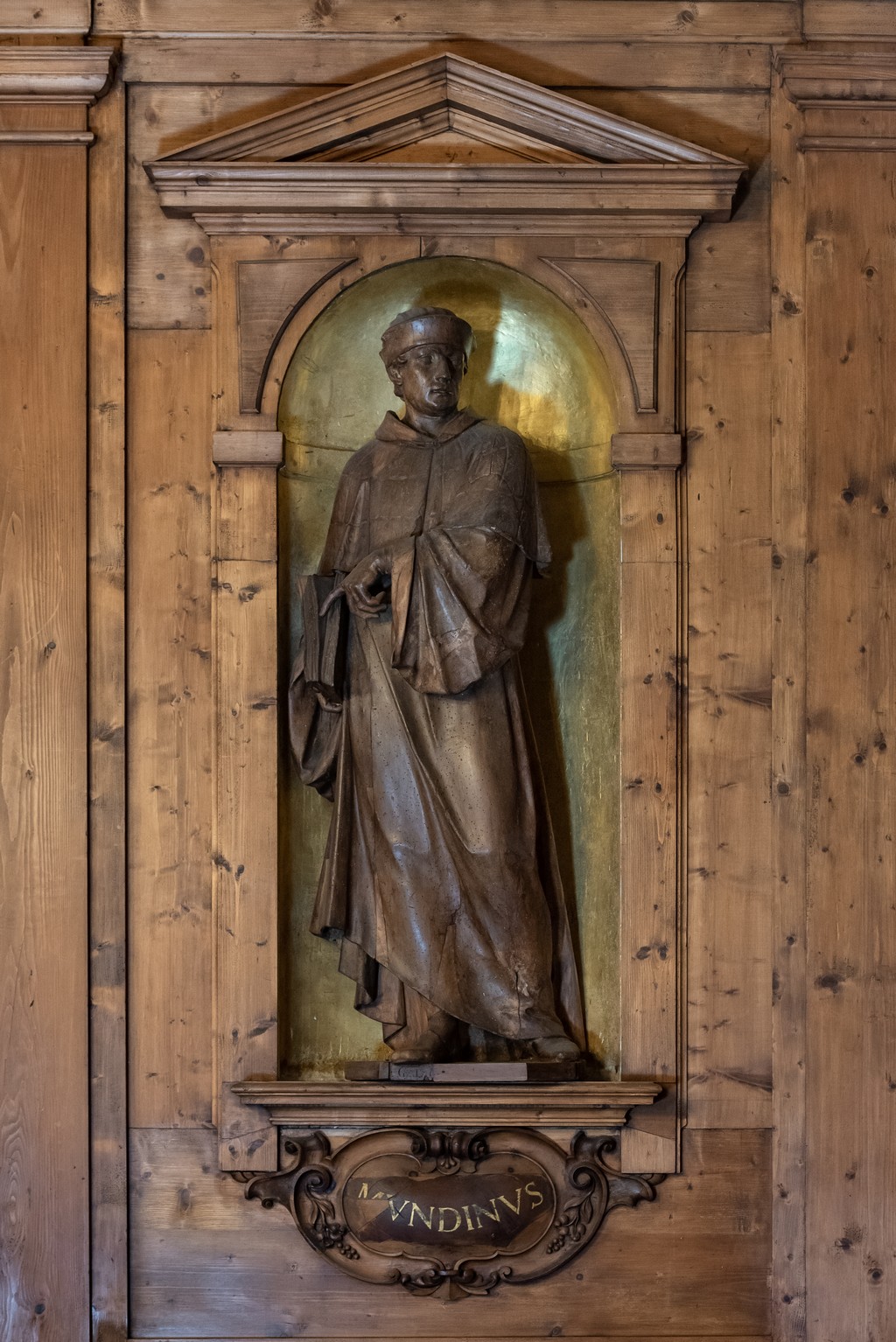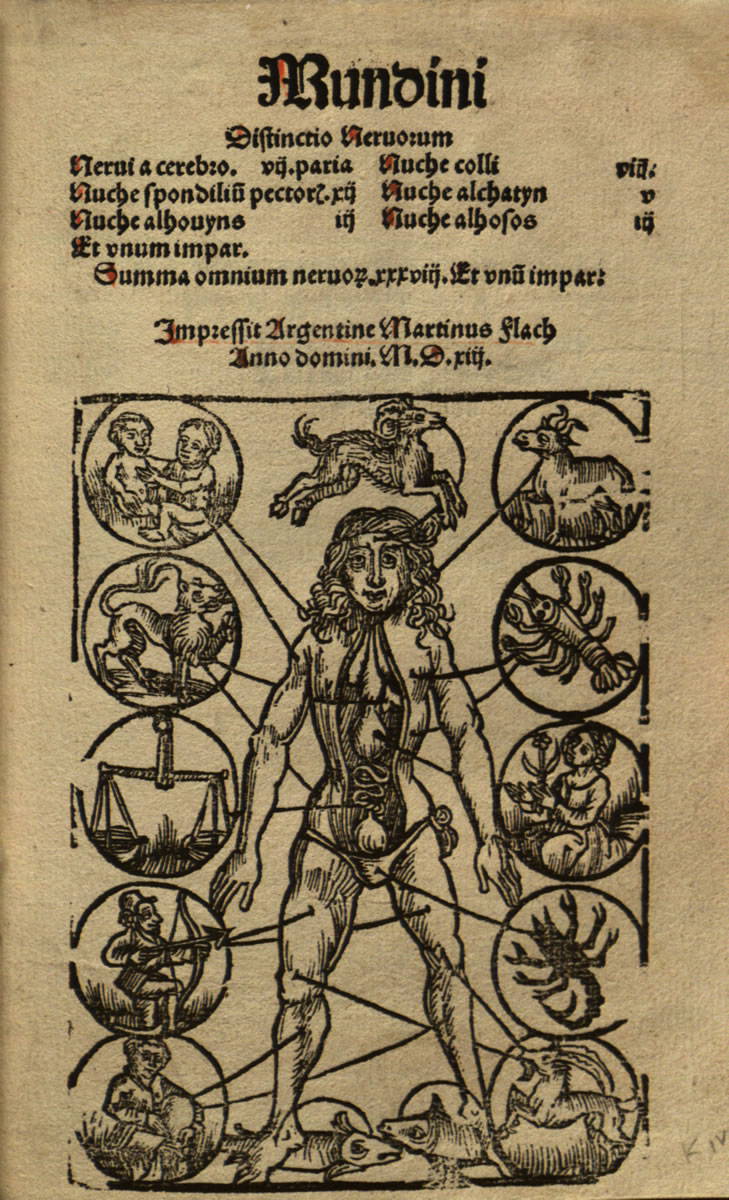
Mondino_Dei_Luzzi_1541_Heart
Art in Science: Mondino de' Liuzzi: The Restorer of Anatomy. Art in Science: Mondino de' Liuzzi: The Restorer of Anatomy. Art in Science: Mondino de' Liuzzi: The Restorer of Anatomy Clin Orthop Relat Res. 2017 Jul;475(7):1791-1795. doi: 10.1007/s11999-016-5213-5.

Mondino de' Liuzzi, Anatomia Biblioteca dell'Archiginnasio
Mondino de Luzzi (also known as Mundini or Mundinus, Liuzzi, Lucci, Liucius, or even Lentiis and Leutiis) was an Italian physician, anatomist, and professor of surgery at the University of Bologna ( Figure 1) ( 1 ).

(PDF) Biografia DI Mondino De' Liuzzi Da Bologna Piero P
Mondino De' Luzzi, (born c. 1270, Bologna, Italy—died c. 1326, Bologna), Italian physician and anatomist whose Anathomia Mundini (MS. 1316; first printed in 1478) was the first European book written since classical antiquity that was entirely devoted to anatomy and was based on the dissection of human cadavers.

Mundinus, the Italian anatomist, making his first dissection in the
Mondino de Luzzi (also known as Mundini or Mundinus, Liuzzi, Lucci, Liucius, or even Lentiis and Leutiis) was an Italian physician, anatomist, and professor of surgery at the University of.

Liuzzo e Mondino de' Liuzzi Storia e Memoria di Bologna
Mondino De Luzzi, Mondino De' Luzzi MONDINO DE' LUZZI (also Liucci or Liuzzi )(b. Bologna, Italy, ca. 1275; d. Bologna, 1326) anatomy. The name Mondino was probably an… Dissection, dissection of the human body is the act or art of cutting open the body in order to display and study the topographical anatomy and structure of its…

(PDF) Mondino de Luzzi a luminous figure in the darkness of the Middle
Mondino de Luzzi had 2 main achievements: In 1316, he wrote a book called Anathomia.His book was used to train and educate doctors about dissections until the 1500s. Mondino would supervise public dissections.

"Mondino dei Luzzi, 1326." Catalogue search Collection
Mondino De' Liuzzi Physician and anatomist, professor of medicine and philosophy (Bologna, c. 1275 - 1326). Mondino introduced the revolutionary practice of autopsy as part of the empirical teaching of medicine. This allowed the discipline to gradually free itself from the theories of the ancients, moving towards a modern conception of knowledge.

(PDF) Una fanciulla al tavolo di Mondino de Liuzzi?
Mondino's Anothomia was written in Bologna around 1316. This book is the intellectual legacy of one of the fathers of human anatomy, and probably represents a collection of lessons given by the author at the Studium in Bologna. Mondino's Anothomia witnesses a profound renewal of the mode of understanding and teaching human anatomy through.

Liuzzi, Mondino de' Storia e Memoria di Bologna
Mondino de' Liuzzi, noto anche come Raimondino di nome, e de' Liucci, de' Luzzi o de' Lucci di cognome; detto Mundinus ( Bologna, 1275 - Bologna, 1326 ), è stato un anatomista italiano, universalmente considerato l'ideatore della moderna anatomia . Indice 1 Biografia 2 L'anatomia 3 Mundinus nell'arte e letteratura 4 Note 5 Bibliografia

Mondino Palazzo dell'Archiginnasio
Medieval anatomist Mondino de' Liuzzi (1270-1326) lived and thrived when the "freeze" on medical and scientific advancement began to thaw. Known as the "Restorer of Anatomy", de' Liuzzi is considered the first to perform a dissection, document it, and publish his findings.

Mondino Anathomia, 1541 3022668 Anatomy Wikipedia Medical
Mondino de' Liuzzi and his Anothomia: A milestone in the development of modern anatomy Enrico Crivellato, Corresponding Author.. Mondino's Anothomia was written in Bologna around 1316. This book is the intellectual legacy of one of the fathers of human anatomy, and probably represents a collection of lessons given by the author at the.

Mondino de Liuzzi Alchetron, The Free Social Encyclopedia
Mondino de Luzzi, or de Liuzzi or de Lucci, ( c. 1270 - 1326), also known as Mundinus, was an Italian physician, anatomist and professor of surgery, who lived and worked in Bologna.

Figure 8 from DEVELOPMENT OF ANATOMIC SCIENCE IN THE LATE MIDDLE AGES
Mondino de' Luzzi (1275-1326) Italian physician who marked the revival of medical practice in the West following the Dark Ages. Arabian and Persian doctors, the greatest of whom was Avicenna , had continued the Hippocratic and Galenic traditions, but their works remained in the framework of Greek medicine and did not produce new methodologies.

Vesalius Early Years and the State of Medical Knowledge
Mondino de Luzzi, or de Liuzzi or de Lucci, [1] [2] ( c. 1270 - 1326), also known as Mundinus, was an Italian physician, anatomist and professor of surgery, who lived and worked in Bologna.

(PDF) Mondino de Luzzi a luminous figure in the darkness of the Middle
Mondini de' Liuzzi (c1270-1326), professor at the Bologna Medical School, supervised the first documented session of public dissection approved by the church, in January 1315. In 1316 the.

Estátua representando Mondino de Liuzzi. 4 Museo di Storia della
Mondino de Luzzi (also known as Mundini or Mundinus, Liuzzi, Lucci, Liucius, or even Lentiis and Leutiis) was an Italian physician, anatomist, and professor of surgery at the University of Bologna.